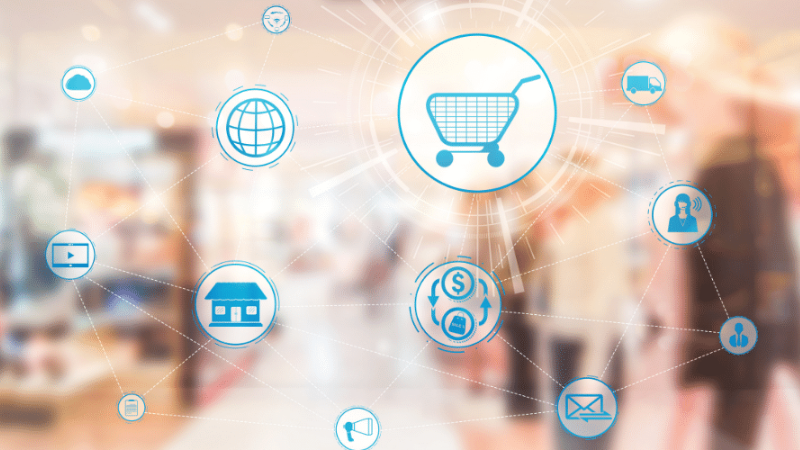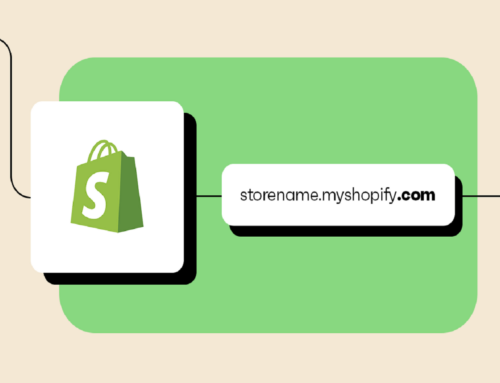Businesses must continually innovate to enhance conversion rates and ultimately maximize sales in the e-commerce market, developing quickly, and customers’ expectations are rapidly altering. How about you as a Shopify store owner? Shopify omnichannel is one approach to giving your customers a highly personalized experience across several touchpoints, guiding them to make purchases smoothly.
This post explores how to generate the omnichannel strategy and the best examples to learn.
Before diving in, let’s start with a question what are the four pillars of a successful Shopify omnichannel strategy?
Contents
What Makes A Successful Shopify Omnichannel Strategy?
To remain relevant, organizations must provide a consistent and cohesive brand experience across all sales and marketing channels, whether accessed digitally, in physical places, or both. It’s all about connecting the dots between your online and offline presence. This is where a well-executed Shopify omnichannel strategy comes into play.
Before we build an omnichannel strategy, it’s crucial to understand the factors that can help you provide customers with what they expect while also providing possibilities to charm and surprise them.
The following are four main cornerstones of a successful omnichannel strategy:
- Marketing: Your marketing messages should look the same across all mediums. A consistent multi-channel marketing strategy can help your customers feel linked to your business across all channels.
- Sales: Sales strategy directly impacts your Shopify omnichannel strategy. It also can assist you in prioritizing the networks that are most appropriate for your target market.
- Order fulfillment and logistics: Whether it’s a meal or a product, order fulfillment is the only method to ensure customers receive what they paid for, whether a meal or a product. It’s an essential component of the omnichannel experience, and it may help you reaffirm your brand promise on the final leg of the journey.
- Operations: To execute omnichannel properly, you must have a system that connects all of your channels. Square can help you put your omnichannel ideas into reality with integrated tools that function together.
Shopify Omnichannel Guide: Common Strategies To Retargeting Importance
Driving quality traffic
Understanding who your consumers are and how they buy from you is the first step toward developing an effective Shopify omnichannel retail strategy. One way is to conduct a primary survey in which participants are questioned about their buying preferences. You might provide a discount to encourage your clients to complete the survey.
You may ask customers how they learn about new products and menu items (social media, in-store shopping, word of mouth) or what items they’d prefer to buy in person rather than online. This type of information assists in focusing your efforts and determining where different channels might support one another.
For example, if many customers claim they find new things on Instagram, you know that’s a channel on which you should focus your efforts.
Remember that data is essential in this case. Focusing on specialization is a good idea, and you can try setting up your adverts and adding the following helpful tools.
>> Read more: 5 Key Pillars of Shopify Social Media Marketing to Boost Your Brand

Creating educational content
High-quality, engaging content is essential for educating customers, addressing complaints, and building trust across platforms. The more engaging the content you can develop to demonstrate why buying from you is a good decision, the more sales you’ll make.
Blog postings, social media, tutorials, customer reviews, and streaming videos are all examples of content marketing initiatives. Video content is interesting, useful for SEO, and performs well on social media. Consider making explainer videos for your main products or services, or start a video lesson series that showcases your area of expertise.
Rather than depending on paid advertisements, aim to create content on your social media that drives visitors to stores. The proof is that Facebook unpaid generates about 2% of all conversions and has the most significant social traffic.

What this data most clearly demonstrates is that you must employ numerous sources to bring visitors to your site. Also, don’t forget to consider where your specific audience is active and where you should develop your social proof. For instance, it can be on Facebook, Twitter, or even Reddit.
How Shopify Social Commerce is Revolutionizing Online Business?
As a result, try to include social media in your in-store experience.
Customers can browse product reviews of what they’re trying on in dressing rooms with displays, which is a valuable addition to existing try-before-you-buy methods. Customers can be encouraged to snap photos of what they bought or ate and post them on Instagram in exchange for a prize. Alternatively, you might have screens that display a live social media feed linked to your products or sector.
On the other hand, QR codes are another tool that may elevate your omnichannel strategy. Businesses may use QR codes to engage with customers in various ways, including presenting information about the manufacturers and chefs behind products and replicating the ambiance of an in-store experience.
Providing promotional messages
In Shopify omnichannel strategy, you need to provide both abandoned cart and promotional messages. The table below shows that promotional campaigns account for 67 percent of total sales, by far the highest of any message type.

Furthermore, one of the essential questions about promotional communications is whether or not to offer a discount. And, if so, how big the deal should be.
In fact, creating the proper discount and presenting it in the right way in your remarketing ads requires significant thought. The size of the deal is also an important consideration.
The most effective message does not specify the size of the discount. Instead, it employs bold wording to pique subscribers’ interest. Subscribers want to click to learn more about the “Biggest ever warehouse clearance.”
Generally, the best Shopify omnichannel technique would be not sending out discount codes too frequently or quickly. Then, even a 20% discount coupon may have a significant influence.
Top Integrations For Your Shopify Omnichannel Strategy
Store locator
Many Shopify omnichannel businesses have both their physical store and online website. Thus a store locator is a must. Why?
- Boost your search engine rankings: More than 40% of queries are for local information. Google and other search engines reward businesses that give helpful information, such as a shop locator, with higher search engine ranks. It means more visibility for your business and increased internet traffic.
- Reduce the number of phone calls you make that aren’t necessary: Customers will know when you’re open and, if you have multiple locations, whether one has the product they want, a good bargain, or is closest to their home. Hence,
- Improve the efficiency of your website: Using a store locator will provide customers with important information about your business that isn’t available on sites like Google Maps. More value equals more site visits, which equals more purchases.
- Gather data: The store locator will give you greater insight into your customers’ care, whether the things you sell or the hours you’re open.
>> Top Best Store Locator Shopify Apps For Selling Omnichannel
As a result, consider Dealer & Store Locator as a third-party app that helps you generate store locators effortlessly. It offers sophisticated customer behavior analytics. This function, in particular, aids in the examination of all customers’ search history to gather their location data, making it easier for you to customize your store locator page to meet your customers’ demands better.
Additionally, Filter Stores by Tags is another unique feature that allows your clients to refine their search by selecting tags. No matter which country your target clients are in, the app supports multi-language, so they can simply comprehend and look for your store on the map.

>> DOWNLOAD Dealer & Store Locator now!
Social media contests
You may understand the importance of social media in gaining new followers and, eventually, new customers. Isn’t it true that it’s easier said than done? Every company wants the same thing, and eyeball time is scarce. On Instagram, for example, the average user spends roughly 30 minutes each day scrolling through photographs and videos.
What are the possibilities of them pausing at your branded content? Hopefully, because 58% of Instagram users said they become more interested in a brand/product after seeing it on Instagram.
Social media will always be a significant channel in your omnichannel strategy, and there is a tried-and-true technique to enhance engagement: run contests across your various platforms. According to tailwind, Instagram accounts that run contests grow more than 70% quicker than those that don’t.
People enjoy winning freebies. Isn’t it strange?
Despite this, only around half of all firms used social media to run contests, and even fewer used more than one social media channel. Because of this gap, your company can benefit from incorporating contests and giveaways into your Shopify omnichannel strategy.
As a result, you should consider a third-party app to offer social giveaway contests. It will help you efficiently conduct a social media contest by offering simple-to-setup campaigns on Facebook, Instagram, Twitter, Pinterest, etc.

Customer relationships
Your Shopify omnichannel strategy is based on all of your business channels collaborating to provide a great shopping experience. In essence, it comes down to customer connections. Previously, shopping was merely a transaction. It is now a relationship that extends from discovery to purchase to post-purchase. And managing that long-term relationship across all of your customers can be difficult without the correct employees, training, and tools.
Consider communication with your consumers as an example. According to research, personalizing your sales and marketing communications increases engagement and conversions. Personalizing emails raises open rates by more than 40% and reply rates by 112%. This type of boost can significantly enhance your sales!
This is why companies turn to robust Customer Relationship Management (CRM) systems to assist personal, two-way contact via email and text and many other aspects of the customer relationship. The correct Shopify CRM system can follow a customer’s online and in-store buying trip and provide insights into which products and marketing they respond to the most.

Luckily, BSS Commerce Shopify Development Services can help you with the 3rd-Party Integration service. They integrate your online store with third-party systems or programs such as ERP, CRM, marketplaces, payment gateways, etc. Thus, empower your e-commerce business and aid with operations management.
Refer to more issues at Shopify Multiple Stores – How To Create & Common Issues
Best Shopify Omnichannel Examples
Allbirds

Allbirds is an e-commerce fashion brand hosted by Shopify. It was previously an online-only firm but decided to test the real world with a retail pop-up a few months after its initial launch. They needed to include omnichannel capabilities to create customer connections and significantly assist in-person clients whose wanted products were not in stock at the places they visited.
Allbirds used Shopify POS to allow buy-in-store and ship-to-customer technology. For example, a consumer may inquire about a rare product. Even if the product is unavailable at the inquiry, an Allbird representative may conduct the transaction and then communicate with the warehouse to ship it to the customer.
Furthermore, if this consumer made an online purchase, Allbirds would have access to their shipping information at any time to expedite the process and, ultimately, improve the customer experience.
Allbirds achieves the following results with this strategy:
- Conversions have increased.
- Better inventory management is a result of the buy-in-store, ship-to-customer strategy.
Bonobos

It’s easy to forget that Bonobos began as an independent fashion firm specializing in men’s pants, given its recent $310 million Walmart acquisition. Bonobos, founded in 2007, had a vision for how it could connect more deeply with its visitors and consumers.
Bonobos became an actual Shopify omnichannel retailer. It puts out a blueprint for creating their retail operation during this process, in addition to the cash influx, selling more, generating greater visibility, and building a more robust in-person brand experience with existing buyers and consumers.
The rest, as they say, is history. Bonobos opened 17 “guide shops” in 2015, where customers could browse and buy online but not take anything home. This simplified inventories and operations while still providing the benefits of touch — a barrier that many people love but that most e-commerce businesses have yet to overcome.
Warby Parker

Data from all channels is precious. It is a thin line between a successful expansion and a failure.
You can use data created by your existing visitors and customers to find out how to get started or expand any new channel while setting it up. Consider this simple strategy.
According to eMarketer, Warby Parker uses the location of its online customers to determine possible chances of building brick-and-mortar locations. They claim that over 75% of clients who shop at its stores have first browsed and researched the company’s website.
In addition, it will be easier to build up your omnichannel architecture if you keep this information in mind. And, whether you call it a minimal viable product or a hazardous assumption test, make sure you experiment for the least amount of money and effort. The success of Shopify omnichannel will hinge on this.
Warby Parker’s physical storefronts, like Bonobos, aren’t designed to sell items. Instead, it takes advantage of its actual businesses to provide clients with something to do with their glasses – a nice sitting area and a library.
Ulta

Ulta, a beauty supply company, remained strong despite the changing seasons. This is linked to their investment and focus on omnichannel retailing. Ulta recognizes that it is not about selling products in various areas but providing a seamless experience for visitors, buyers, and customers. This unique exterior experience reflects their internal activities.
Besides, like Warby Parker, it tests new products in tiny batches, putting them on its internet site first and then introducing them into stores two weeks later. Since they spotted their clients visiting websites before purchasing things in the store. People have two weeks to learn about a new product, determine whether or not they like it, then make plans to visit the store.
Stitch Fix

The capacity to give individuals a seamless purchasing experience is at the heart of Shopify omnichannel. Convenience and predictability are vital, but excitement is also essential. You may use strategies like flash deals to get consumers back in, but you can also incorporate enthusiasm into your delivery and distribution.
Stitch Fix is a fashion retailer that acts as a personal stylist for its customers. Specifically, it goes one step farther than most e-commerce sites. Stitch Fix’s algorithms select and ship the garments that its consumers would appreciate. Customers can return products they don’t like for free because Stitch Fix provides free shipping both ways.
While you may not know where to begin constructing an algorithm or forming a data team (Stitch Fix employs 75 people), you can start with the data and behavior and build hypotheses and models around it. Even though the Stitch Fix crew is beginning to create their garments, their business approach is relatively simple.
Conclusion
Considering trade as operating in one area or the other is no longer feasible. Retailers must engage with their customers wherever they are to survive and adapt to changing consumer behavior. Customers want to shop locally, and businesses must adjust to meet their needs.
That’s when Shopify omnichannel comes into play. Adopting an omnichannel approach will enable you to continue future-proofing their businesses and livelihoods.





